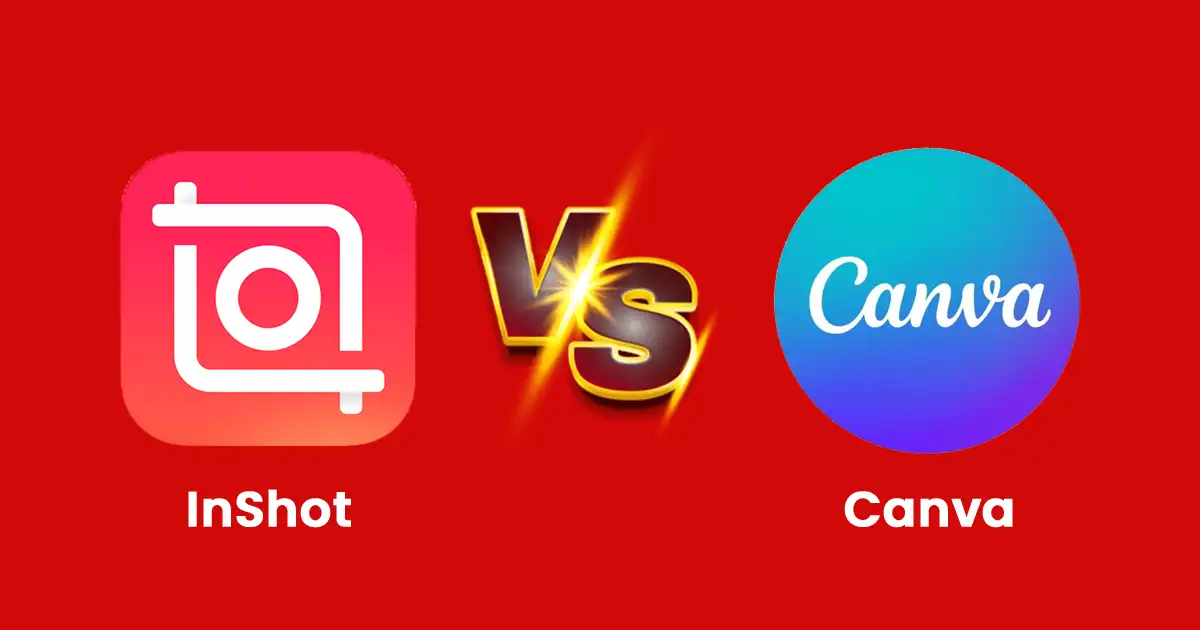InShot vs. Canva: Find the Perfect Editor for Your Projects
When it comes to content creation, choosing the right tool can make all the difference. Whether you’re a social media influencer, a small business owner, or just someone who loves sharing moments online, having the right editing tools at your fingertips is crucial. In this article, we’ll dive into a detailed comparison between two popular platforms—InShot and Canva—to help you figure out which one is better suited for your needs in 2024.

InShot: The Mobile Video Editing Pro
It is a pocket-sized powerhouse that’s made a name for itself in the world of mobile video editing. Whether you’re trimming clips, adding music, or creating transitions, InShot is designed to make video editing a breeze, right from your phone.
Key Features of InShot:
- Mobile-Friendly Design:
InShot is all about convenience. It’s optimized for mobile devices, so you can edit videos on the go. Its touch-friendly controls and simple layout make it perfect for quick, hassle-free edits. - Versatile Editing Tools:
Don’t let its simplicity fool you—InShot packs a punch when it comes to editing tools. You can trim and merge videos, adjust speed, add filters, and even create collages. Plus, it’s got a solid range of transitions, text, and music options to give your videos that professional touch. - Social Media Integration:
Sharing your creations is a breeze with InShot. It’s seamlessly integrated with popular platforms like Instagram, TikTok, and YouTube, so your videos are always optimized for maximum engagement. - In-App Purchases:
While InShot is free to use, you can unlock additional features like premium filters and effects through in-app purchases. This allows you to customize your editing experience based on your needs and budget.
InShot Pros and Cons
Pros
Cons
Canva: The Design Powerhouse
Now, let’s talk about Canva, which is like the Swiss Army knife of design tools. It’s a web-based platform that’s become synonymous with creating stunning visuals, from social media posts and presentations to posters and infographics. The best part? You don’t need to be a professional designer to use it.
Key Features of Canva:
- User-Friendly Interface:
Canva’s interface is designed to be intuitive, so even if you’re a complete newbie, you can create professional-looking designs in minutes. The drag-and-drop functionality makes it super easy to add and arrange elements on your canvas. - Extensive Template Library:
It is loaded with thousands of professionally designed templates. Whether you need a quick Instagram post or a full-blown presentation, there’s a template for that. Just pick one, tweak it to fit your brand, and you’re good to go. - Design Elements Galore:
It offers a vast library of design elements, including stock photos, icons, fonts, and illustrations. You can even upload your own images to add a personal touch to your designs. - Collaboration Made Easy:
Working on a project with a team? Canva’s got you covered. You can share your designs with team members and work on them together in real-time. No more endless email chains or version control headaches. - Brand Kit for Consistency:
If you’re managing a brand, Canva’s Brand Kit feature is a lifesaver. It lets you store your brand’s logos, colors, and fonts in one place, so every piece of content you create is on-brand.
Canva Pros and Cons
Pros
Cons
Choosing the Right Tool for You
Go with InShot if:
- You primarily work with videos and need a powerful editing tool that’s mobile-friendly.
- You’re looking for a straightforward, easy-to-use video editor that integrates well with social media.
- You want a budget-friendly option with the ability to purchase extra features as needed.
Go with Canva if:
- You’re focused on graphic design and need versatile tools to create various types of visual content.
- You work with a team and need collaborative features.
- You want access to a vast library of templates and design elements.
Frequently Asked Questions
Conclusion
Both InShot and Canva are fantastic tools, but they serve different purposes. InShot is your go-to for quick, on-the-go video edits, especially if you’re focused on social media content. Canva, on the other hand, is perfect for all things design, offering a wide range of features that make creating visual content a breeze.
So, whether you’re editing your latest TikTok video or designing a striking Instagram post, exploring these platforms can help elevate your content and make your online presence shine in 2024 and beyond.
